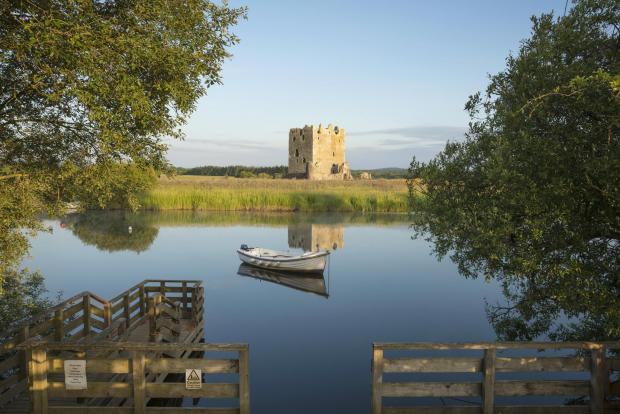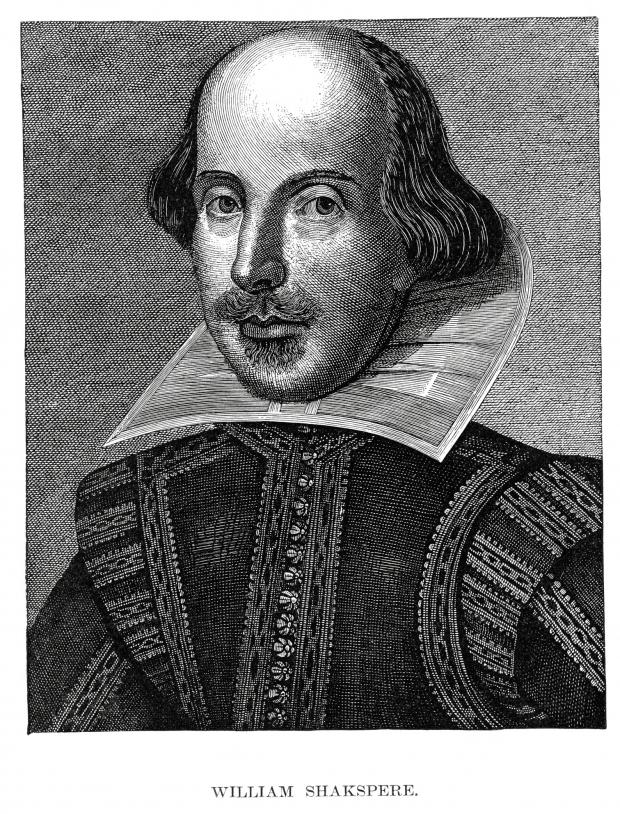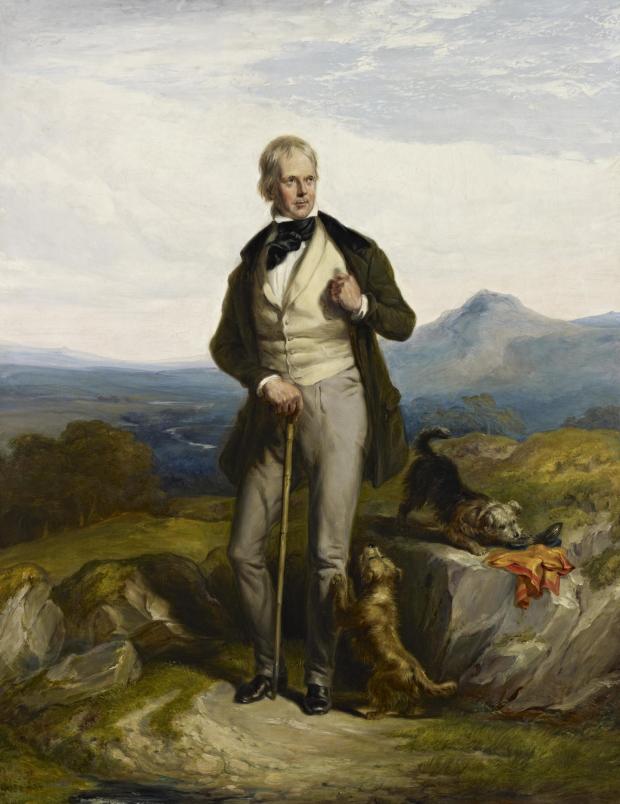LAST week, I began this short series on the great lowland clans by describing how the Douglas family came to prominence, largely through the efforts of William “the Hardy” and his son Sir James “the Black” Douglas, long-time friend and ally of King Robert the Bruce. I will return to Sir James in a future column in my next series about men and women who shaped Scotland without taking the throne.
This week I will show how Clan Douglas split into two lines, the “Black” Douglases of Douglasdale and the “Red” Douglases of Angus. There would later be many more branches of this mighty clan, and some of its leading figures would play a major part in Scottish and indeed British history, yet the Douglas clan today has no formally recognised chief – I’ll explain why next week. Given the historical facts about the Douglases, there will be some gruesome details in this week’s column, but I will try and keep them to a minimum.
READ MORE: The mightiest of Scotland’s lowland clans: How Douglas saw tragedy and triumph
Though they outgrew the village of Douglas and its castle, the family for many generations kept to a Douglas tradition by being buried in St Bride’s Kirk, which effectively became a mausoleum for the Black Douglas line. You can see their memorials in the Kirk to this day.
The split into Black and Red Douglases came because of tragedy when James, the 2nd Earl of Douglas and Earl of Mar, was killed fighting the English at the Battle of Otterburn in 1388. He was the son of the 1st Earl of Douglas and Margaret, Countess of Mar, and had married Princess Isabel, daughter of King Robert II, but had no legitimate children at the time of his death. He did have two illegitimate sons, William and Archibald, the ancestors of the clan’s branches of Douglas of Drumlanrig and Douglas of Cavers.
It was his sister Isabel, Countess of Mar, who inherited a lot of the Douglas property but the title and most of the Douglas lands passed to the 2nd Earl’s cousin, Archibald, the illegitimate son of Sir James Douglas. Hugh, the Lord of Douglas, perhaps should have inherited all, but his nickname “the Dull” suggests he was a simpleton and he was persuaded to pass the Earldom to Archibald who was an important personality in the development of the Black Douglases.
He was a warrior who had fought for the French against the English at the Battle of Poitiers and who had then become Lord of Galloway in 1369 after a series of successful battles to oust the English occupiers from southern Scotland. He duly built a new power base, Threave Castle, whose iconic ruins still stand on an island in the River Dee near Castle Douglas.

Archibald (1330-1400) has come down to us largely thanks to his nickname – the Grim. He got that name from the English troops that he ousted from Lochmaben Castle in 1385, with one Scottish chronicler writing: “He was callit Archibald Grym be the Englishmen becaus of his terrible countenance in wierfare [warfare]”.
He married well in 1362 to Joan or Johanna Moray, the Lady of Bothwell, a dynastic arrangement which brought several estates across Scotland to Archibald and which also appears to have been a happy marriage as they had numerous children. He was also not so Grim as he was painted – he endowed several church institutions and was known for his chivalrous behaviour as long as he wasn’t fighting.
As 3rd Earl of Douglas and the most powerful lord in southern Scotland, Archibald the Grim imposed his law and order on the Border chieftains, and he also secured a royal marriage for his son and heir – also Archibald – to King Robert III’s daughter Princess Margaret. Most important of all, he arranged for his daughter Marjorie to marry David Stewart, Duke of Rothesay and heir to the throne. That latter marriage would end in tragedy as Rothesay’s uncle, Robert Stewart, the Duke of Albany, was regent of Scotland due to Robert III’s illnesses, and was in no mood to relinquish his power, arranging for his nephew to be imprisoned on trumped-up charges. The 4th Earl of Douglas, Archibald – known perhaps erroneously as the “tyneman” or loser – also turned against Rothesay, accusing the heir to the throne of gross misconduct against his sister Marjorie. The Douglas Earl was implicated in the plot to imprison Rothesay, who died in the pit of Falkland Palace. Funnily enough, though he was just 24 and fit, an inquiry said he died of natural causes and cleared Albany and Douglas of all blame.

The 4th Earl has a claim to fame as one of the few Scottish characters in the plays of William Shakespeare outside of Macbeth. As Archibald “The Douglas” he features in Henry IV Part One, and is captured by Henry Hotspur – only to be released to fight in the rebellion against Henry, in which he kills Sir Walter Blunt or Blount, and nearly gets the king, too.
Those were true events, but the scene after the Battle of Shrewsbury in 1403 – where he is freed because of his courage and chivalry – is an invention, as Douglas was held captive for several years.
He would later join the French war against Henry V of England, and in 1424 responded to a personal plea from King Charles VII of France to come to his aid. For doing so he was made Duke of Touraine and appointed Lieutenant General of the French army, the first foreigner to be made a French duke. He enjoyed the title for just a few months as he was killed in the disastrous – for the French and Scots – battle of Verneuil, with his son James also among the dead.
Meanwhile, the Red Douglas line was getting going. George Douglas (1380-1403) was the illegitimate son of the William, the 1st Earl of Douglas and Margaret Stewart, the Countess of Angus, Dowager Countess of Mar and Lady Abernethy, titles which she held in her own right. She was one of the most powerful women in the land and seems to have dominated the weak King Robert III, persuading him to allow her son George to marry the king’s daughter Princess Mary, upon which marriage George became Earl of Angus and gained more land and titles from his half-sister Isabel, the Countess of Mar. George Douglas, Earl of Angus, was captured by the English at the battle of Homildon Hill in 1402 and died from the plague in captivity a year later at the age of 22 or 23.
George’s son, the 2nd Earl of Angus, inherited the title at the age of four, and when King James I was captured and imprisoned by the English in 1406, it seemed he might be sent south as a hostage by the Duke of Albany. He escaped that fate and was one of the nobles who greeted King James when he returned to Scotland in 1424.
James purged his court of the Albany Stewarts and the Earl of Angus – and his cousin the 5th Earl of Douglas – sat on the jury which condemned the 2nd Duke and his two sons and their ally the Earl of Lennox to death by beheading for treason.
James himself met a grisly end, assassinated in Perth on February 20, 1437, and he was succeeded by his son James II, then only six. At this point the Black Douglases reached a new zenith of power, as the Earl of Douglas was appointed Lieutenant General and Regent of Scotland until his death in 1439. His son and heir William was 15; his younger son David about nine.
The following year, three powerful men decided to try and seize power for themselves. They were William Crichton, 1st Lord Crichton and Lord Chancellor of Scotland, Sir Alexander Livingston of Callendar. James Douglas, Earl of Avondale – a favourite of James I and second son of Archibald the Grim – is also said to have been involved in the plot that became known as the Black Dinner, but evidence for that is scanty.
What certainly did happen is that having become 6th Earl of Douglas, William and his brother David were invited to dine at Edinburgh Castle in the presence of the 10-year-old James II. Legend has it that a black bull’s head, a symbol of death, was laid on the table before the men of Crichton and Livingston seized the two youths. They were subjected to a mock trial and despite the young king’s protests, they were summarily executed for treason by being beheaded in the castle courtyard. This event is said to have partly inspired George RR Martin to write the infamous Red Wedding scene for Game of Thrones.

Sir Walter Scott (above) described the event thus: “Edinburgh Castle, toune and towre, God grant thou sink for sin! And that e’en for the black dinner, Earl Douglas gat therein.”
The Earl of Avondale promptly became the 7th Earl of Douglas and clan chief and controlled vast areas of Scotland – though he lived for only three years after the Black Dinner, which may have been due to his corpulence: he was known as James the Gross. One can only imagine what effect the event had on James II, and he certainly displayed symptoms of mental upset in later life, not least because of what he did to William Douglas, the 8th Earl and Lord of Galloway and Lauderdale.
Well aware that he was seen as the chief magnate of Scotland and a possible threat to James II, this Lord Douglas wanted out of Scotland, possibly for safety reasons, and went on pilgrimage to Rome. While he was abroad, King James attacked several Douglas properties because there had apparently been insults and damage done to neighbours.
He returned in August 1451, and early the following year he received a summons to attend upon the king at Stirling Castle. The summons was conveyed by Sir William Lauder of Haltoun, a friend and relative of the Douglases. Lauder also brought a letter of safe conduct for the earl signed by the king and this seems to have reassured him about his safety.
It was nothing of the sort. On February 22, 1452, William Douglas was told by the king that he must dissolve a pact for mutual protection that he had formed with the Earl of Crawford and the Earl of Ross, Lord John of Islay, chief of Clan Donald. Douglas refused and James II lost his temper and promptly drew his dagger – more probably a dirk – before stabbing the earl 26 times. Other nobles joined in, and Sir Patrick Gray completed the assassination by bashing out “his brains with a pole ax” as one chronicle put it. The earl’s body was thrown out of the window into the garden below.
As the earl had no legitimate children, William’s brother James became the 9th Earl of Douglas. He rallied the Douglas forces and marched on Stirling with the king’s letter of safe conduct attached to his horse’s tail. Joining the king’s side, however, were the Red Douglases in the person of George Douglas, 4th Earl of Angus.
James Douglas’s allies deserted him and he fled to England. As recently as 1448, the two branches of the Douglases had fought alongside each other in winning the Battle of Sark. But now relationships were sundered, and with the 9th Earl still in England, the Earl of Angus and his allies in the Borders families fought the Battle of Arkinholm and smashed the Black Douglases once and for all.
The 9th Earl and his family were attainted and the title of Earl of Douglas – and thus the clan chieftainship – was given to the Red Earl of Angus. Next week we’ll see how it all ended.




















![[Book Review] The Blade Itself (The First Law Trilogy) by Joe Abercrombie](https://bendthekneegot.com/wp-content/uploads/2018/01/1516047103_maxresdefault-218x150.jpg)

















